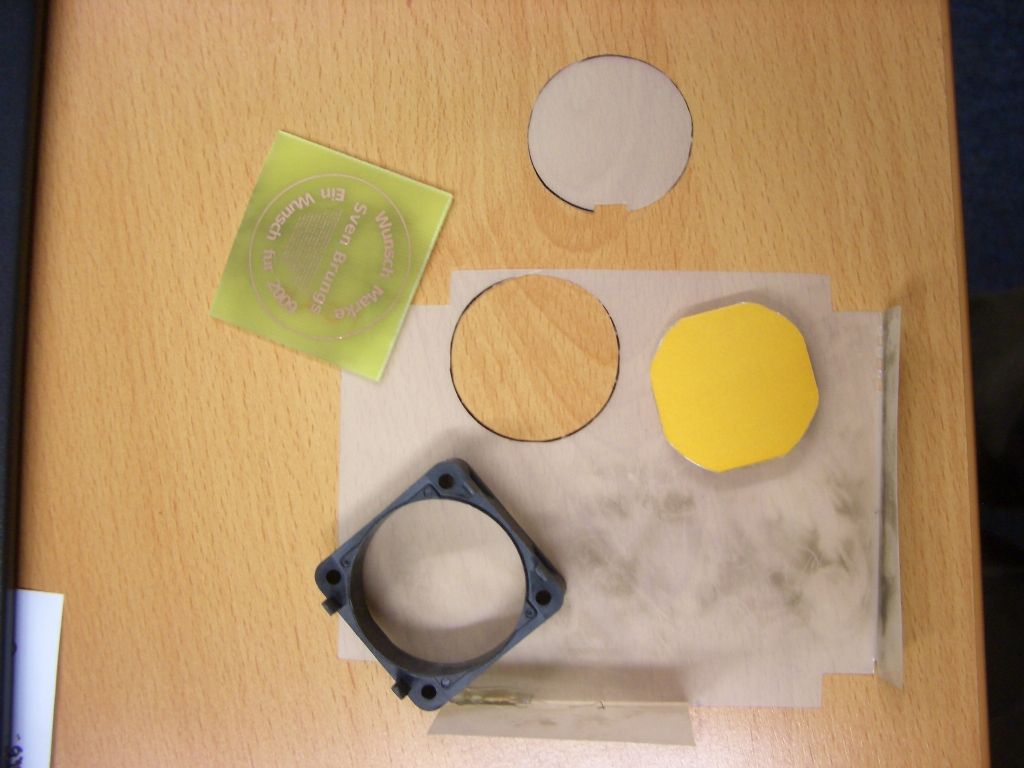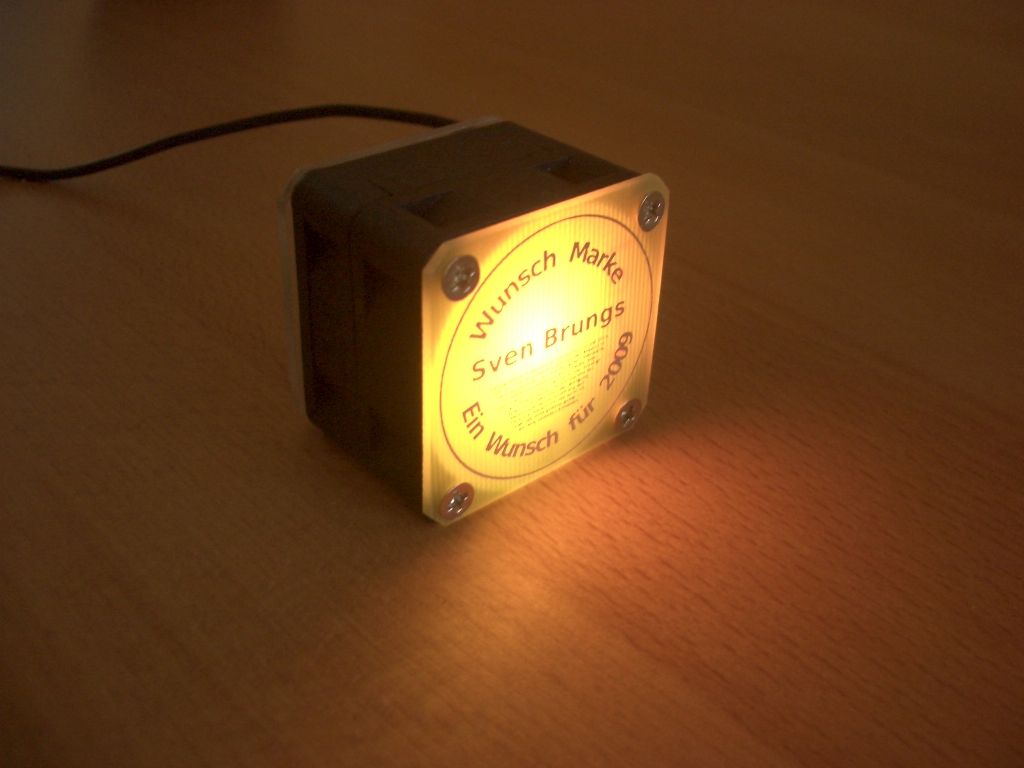After Christmas I was in the situation that my nephew’s birthday celebration came near. I asked him if he had a special on his wish list and he told me that he doesn’t have a wish at all, for the moment. He still had not played with every toy he got for christmas. We decided it would be best if I gave him gift certificate that he could use later in the year. Hmmmm …. I don’t like those cards that have no personality, and I gave it a thought.
After a while I thought about a coin, that he could use as a gift badge. I decided to make this coin out of a copper pcb. I liked to etch some text out of it. Then I saw an old and broken cooling fan lying on my desk and remembered that I had some high power RGB LED in my parts collection.
After some search in the Internet I decided to build an ambilight device with the etched coin backlit by the RGB LED.
I was somehow limited to the microprocessor. I had an spare ATTiny13, and did not want to use to much control buttons. Everything should be simple. I found this software http://www.loetstelle.net/projekte/moodlight/moodlight.php . Markus used an ATTiny12, but it was easy to adapt his code to the ATTiny13.
Step: 1 Parts needed
You need a case to put all thing into. I used the case from a broken cooling fan of a servers power supply. The fan was a 40mm fan marked as GM1204PQV1-8A. The speciality of this fan is the rather long tubing of the case. The case is made of two parts. One holding the fan and the other being simply a tube.
– I found some insulation material inside the broken power supply.
– A heat sink taken from an old motherboard fits into the case, if the edges are cut a little bit.
– Some time ago I bought a rubber cap for push buttons from DealExtreme.
– The ATTiny13 (or ATTiny12).
– some resistors and capacitors
– some small wires
– a small push button
– silicone paste to mount the RGB-LED onto the heat sink
– a small 5V power supply (a 3V coin cell battery may do as well … for some time)
– old pingpong ball
– some acrylic
– etching pcb’s
– the ability to etch pcb’s
– plastic spray, PLASTIK 70, to seal the badge
– tools like soldering iron, pliers, screwdrivers …
Step: 2 The circuit construction
The schematic is rather simple. The whole circuit is build around the microcontroller. There is one single push button, some capacitors and some resistors. The resistors are limiting the current that flows through each diode of the RGB LED. There is a programming connector on the pcb. This is only needed if you solder the microprocessor into the board and want to program it later.
The pcb contains a single sided layout. The final shape is not rectangular but more rounded, so that it fits into the case. The push button is as far in the center of the pcb as possible. The rubber cap can be placed centered and that makes it look more nice.
The PCB is mounted into one part of the case with the soldering side pointing to the front of the device. The push button points to the back.
On the back an acrylic plate holds the rubber cap of the push button.
Put some insulation material on the soldering side and clip together the two pieces of the case.
After mounting the RGB-LED onto the head sink the LED is pushed onto the insulating material. The LED points to the front.
After cutting the pingpong ball in shape it is pushed over the RGB-LED and finally the etched gift badge is screwed in place.
This way the whole device is mounted in sandwich style and held together by the acrylic plate on the back and the gift badge on the front.
Step: 3 The gift badge
First of all you need to decide what you want to print onto the badge.
I used “The Gimp” for the design. Make some test prints on standard paper and in the final size to check the results.
I don’t like to describe the etching process, because there are good Instructables already like; http://www.instructables.com/id/5pcb/ , http://www.instructables.com/id/Mostly-easy-PCB-manufacture/ .
I used this process for the badge and for the pcb as well.
Finally cut the badge in shape. I filed the edges to make it look nice. Drill some mounting holes. When the shape is ready clean the badge using Acetone. When the copper is shiny use some plastic spray to seal the surface. I used http://www.kontaktchemie.dk/Produktoversigt/plastik_70.htm . If you don’t seal the surface the copper will oxidize. Do not use sandpaper on the badge. I think it doesn’t look nice …
For more detail: Ambient Light Gift Badge using ATTiny13 microcontroller


